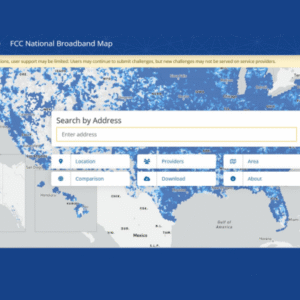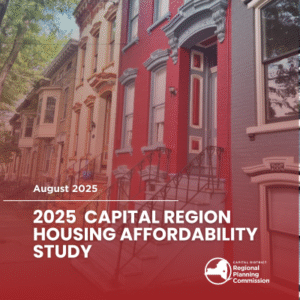Exploratory Housing Analysis
Kathy Hochul has proposed ‘Housing Compact’ legislation for New York State which would establish new criteria for municipalities to become Safe Harbor Municipalities. Unless a community achieves a Safe Harbor Municipality designation, the state will prevent local home rule for the purposes of housing development review. To become a Safe Harbor Municipality:
1. Municipalities in upstate New York must grow their housing stock by 1% over a three-year period, using the 2020 Census as a baseline.
Or
2. Municipalities must enact into law two out of five ‘preferred actions’.
These ‘preferred actions’ are:
- Permit Accessory Dwelling Units in locations where single and multi-family housing units are permitted.
- Allow lots to be split.
- Remove exclusionary zoning.
- Permit adaptive reuse rezoning.
- Permit smart growth rezoning.
Under the ‘Housing Compact’ bill, $250 million dollars will be made available for the development of infrastructure and $20 million for zoning code amendments related to preferred actions. Specific housing data will be required to be submitted to the NYS Division of Homes and Community Renewals (DHCR) annually by each municipality.
Leveraging the data CDRPC already collects and analyzes, an exploratory analysis was created to better understand if communities are reaching 1% growth over the past three years. This is done by utilizing 2019-2021 building permit issuance data and 1% of each municipalities housing stock from the 2020 census data.
The map in the middle illustrates municipalities that have/have not reached the 1% growth target set out in the Housing Compact. The red municipalities have fallen short of the 1% growth target and municipalities in green have reached the 1% growth target. The map on the right shows the degree to which municipalities deviate from the 1% target, with the larger green arrows pointing upward signifying municipalities that are above their target and the larger red arrows pointing downward signifying communities that have missed the growth target.
The gage on the top left portion of the dashboard is dynamic and will change based on the municipality you select on the middle map.
Make this selection by clicking:

Or activating this button:

There are some data gaps to acknowledge in this analysis one of which is that building permit issuance data does not describe where or what type of housing unit is being built, so in this analysis it is assumed that one unit is one unit. The ‘Housing Compact’ standards would count affordable units as 2 units and a unit that converts an uninhabitable unit to a unit that is suitable for living as 1.5 units. Additionally, the building permit issuance data relies on the accuracy of responses to the US Census Building Permit Survey and not all building permit data is captured through the survey. Regardless of these data shortcomings, this is a great example of leveraging available data to anticipate community needs during a potential change in policy.


